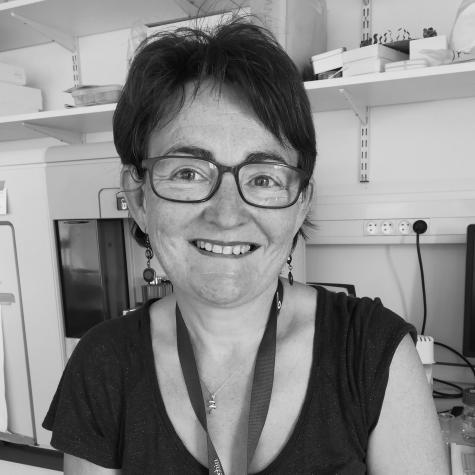Robustness and evolvability of life
Responsable(s) de projet
We are studying strategies that bacteria employ in order to survive and evolve: the maintenance of stability, biological robustness, and generation of phenotypic and genetic variations. We are studying underlying molecular mechanisms, but are also taking into account evolutionary and ecological processes responsible for their emergence.
Genome-wide mapping of spontaneous DNA replication error-hotspots using mismatch repair proteins
Fidelity of DNA replication is crucial for the accurate transmission of genetic information across generations, yet errors still occur despite multiple control mechanisms. This study investigated the factors influencing spontaneous replication errors across the Escherichia coli genome. We detected errors using the MutS and MutL mismatch repair proteins in rapidly proliferating mutH-deficient cells, where errors can be detected but not corrected. Our findings reveal that replication error hotspots are non-randomly distributed along the chromosome and are enriched in sequences with distinct features: lower thermal stability facilitating DNA strand separation, mononucleotide repeats prone to DNA polymerase slippage, and sequences prone to forming secondary structures like cruciforms and G4 structures, which increase likelihood of DNA polymerase stalling. These hotspots showed enrichment for binding sites of nucleoid-associated proteins, RpoB and GyrA, as well as highly expressed genes, and depletion of GATC sequence. Finally, the enrichment of single-stranded DNA stretches in the hotspot regions establishes a nexus between the formation of secondary structures, transcriptional activity, and replication stress. In conclusion, this study provides a comprehensive genome-wide map of replication error hotspots, offering a holistic perspective on the intricate interplay between various mechanisms that can compromise the faithful transmission of genetic information.
Financed by ANR-24-CE12-7386-01
Publications:
Hasenauer, F.C., Barreto, H.C., Lotton, C., and Matic, I. (2025) Genome-wide mapping of spontaneous DNA replication error-hotspots using mismatch repair proteins in rapidly proliferating Escherichia coli. Nucleic Acids Res. 53 : gkae1196
Tracking hypermutable cell subpopulations
In changing and stressful environments, the available genetic variability can limit adaptation. So, the question is how organisms find the balance between adaptability—the ability to adapt to new conditions—and adaptedness—the ability to remain adapted to current conditions. The trade-off between population adaptability and adaptedness can be mitigated by limiting the increase in mutation rates to short periods of time and by within-population heterogeneity in mutation rates. The presence of subpopulations of cells exhibiting high mutation rates does not affect the average mutation frequency and, therefore, does not reduce the population's mean fitness in a stable environment. However, it can contribute to the population's adaptability in fluctuating environments because these subpopulations represent a reservoir of increased genetic variability. The existence of subpopulations of transient mutators in bacterial populations was theorized 30 years ago, but bulk population measurements used to study mutagenesis precluded experimental demonstration of their existence. We have developed the first method allowing the visualization of emerging mutations in individual living Escherichia coli cells. This method enables the monitoring of genome-wide mutations in living cells independently of their effect on fitness. Hence, replication errors giving rise to lethal, deleterious, and even neutral mutations can be visualized for the first time. By using this assay, we will investigate population-wide heterogeneity in mutation rates at the single-cell level and identify the molecular mechanisms responsible for the emergence of mutator subpopulations.
Financed by Labex Who Am I? (ANR-11-LABX-0071) - Initiatives d’excellence (Idex ANR-11-IDEX-0005-02)
Publications:
Tenaillon, O., and Matic, I. (2020) The impact of neutral mutations on genome evolvability. Curr Biol. 30:R527-R534
Matic, I (2019) Mutation rates heterogeneity increases odds of survival in unpredictable environments. Mol Cell 75:421-425
Woo, A.C., Faure, L., Dapa, T., and Matic, I. (2018) Heterogeneity of the spontaneous DNA replication errors in single isogenic Escherichia coli cells. Science Advances. 4: eaat1608
Elucidating biological role of toxin-antitoxin (TA) systems controlled by genotoxic-stress response regulon called SOS in Escherichia coli
TA systems are genetic entities that are widespread in prokaryotes. While the molecular mode of action of many TAs is identified, their biological roles are still mostly unknown or misinterpreted. The advantage of studying SOS-controlled TAs is that the SOS regulon is arguably the best-characterized DNA damage response regulon. The study of the SOS regulon has greatly contributed to our understanding of how different DNA damage repair and tolerance functions are coordinated based on the nature, quantity, and persistence of DNA damage. Because the SOS regulon was initially identified as a response to DNA damage, the role of SOS genes not directly involved in DNA repair, such as TAs, was largely ignored. In Escherichia coli, SOS-controlled toxins target: the membrane (TisB and DinQ), which causes a collapse of the proton motive force (PMF) and affects PMF-associated membrane transactions, including nutrient uptake and ATP production, and inhibit protein synthesis (SymE, YafO, and YafQ). We are investigating how the fine-tuning of the interplay between DNA repair and TAs, which modulate energy production and translation capacity, impacts the survival of stressed cells in different environments.
Financed by ANR- 21-CE12-0006 : Life Saving Toxins
Su, W.-L., Bredeche, M.-F., Dion, S., Dauverd, J., Condamine, B., Gutierrez, A., Denamur, E., and Matic, I. (2022) TisB protein protects Escherichia coli cells suffering massive DNA damages from environmental toxic compounds. mBIO. 13: e00385-22
rRNA operon multiplicity as a major determinant of growth restart.
Quickly restarting growth upon encountering favorable environmental conditions is a major contributor to fitness in natural environments. It is widely assumed that the time required to restart growth after a nutritional upshift is determined by how long it takes for cells to synthesize enough ribosomes to produce the proteins required for reinitiating growth. We recently demonstrated that a reduction in the capacity to synthesize ribosomes, achieved by reducing the number of ribosomal RNA (rRNA) operons (rrn), results in a longer transition from the stationary phase to growth in Escherichia coli, primarily due to high mortality rates. Cell death occurs due to DNA replication blockage and massive DNA breakage at the sites of the remaining rrn operons that become overloaded with RNA polymerases. We also found that replication-transcription conflicts impact the duration of the recovery phase following ribosome-damaging stresses, such as exposure to antibiotics, bile salts, or high temperatures. We are currently investigating the molecular trade-offs that determine the optimal rrn operon multiplicity, and consequently growth restart, for a given bacterial species.
Fleurier, S., Dapa, T., Tenaillon, O., Condon, C., and Matic, I. (2022) rRNA operon multiplicity as a bacterial genome stability insurance policy. Nucleic Acids Res. 50:12601-12620.








